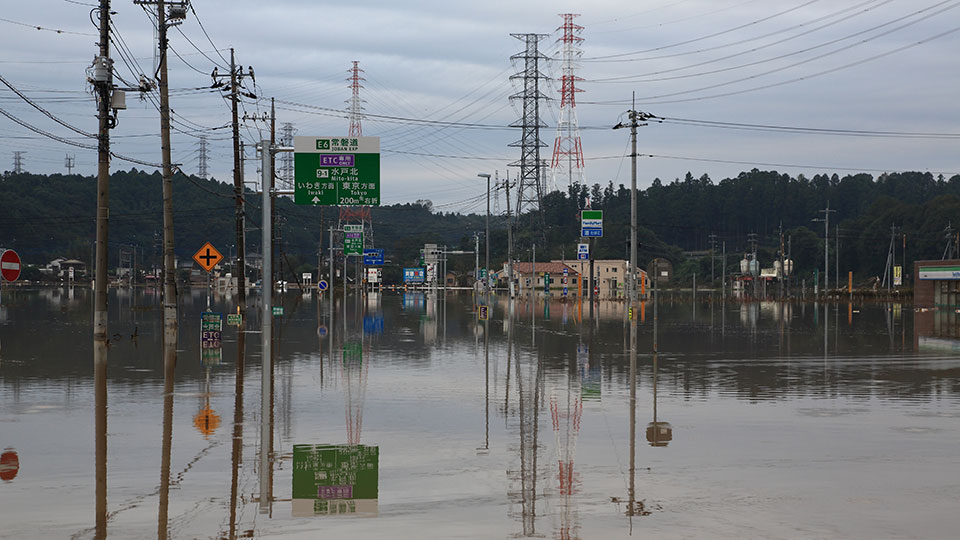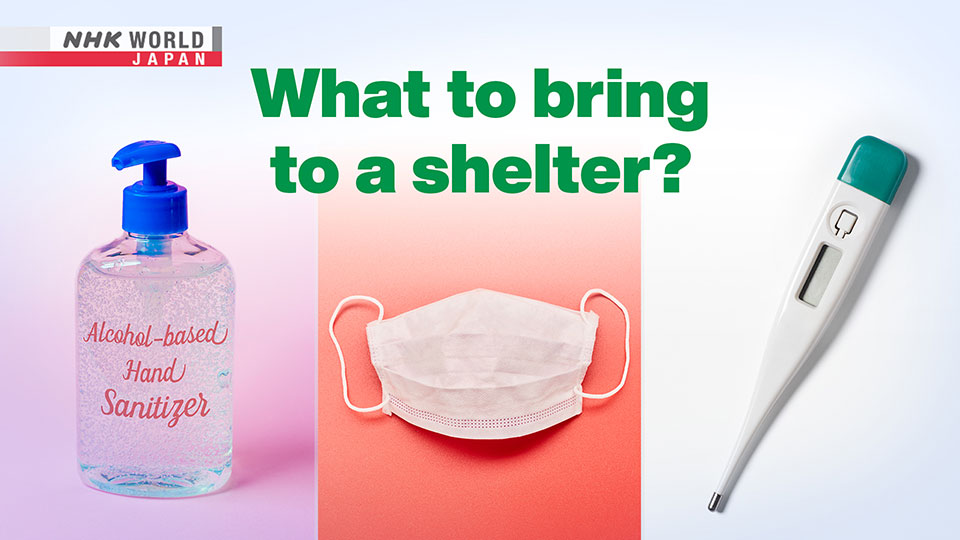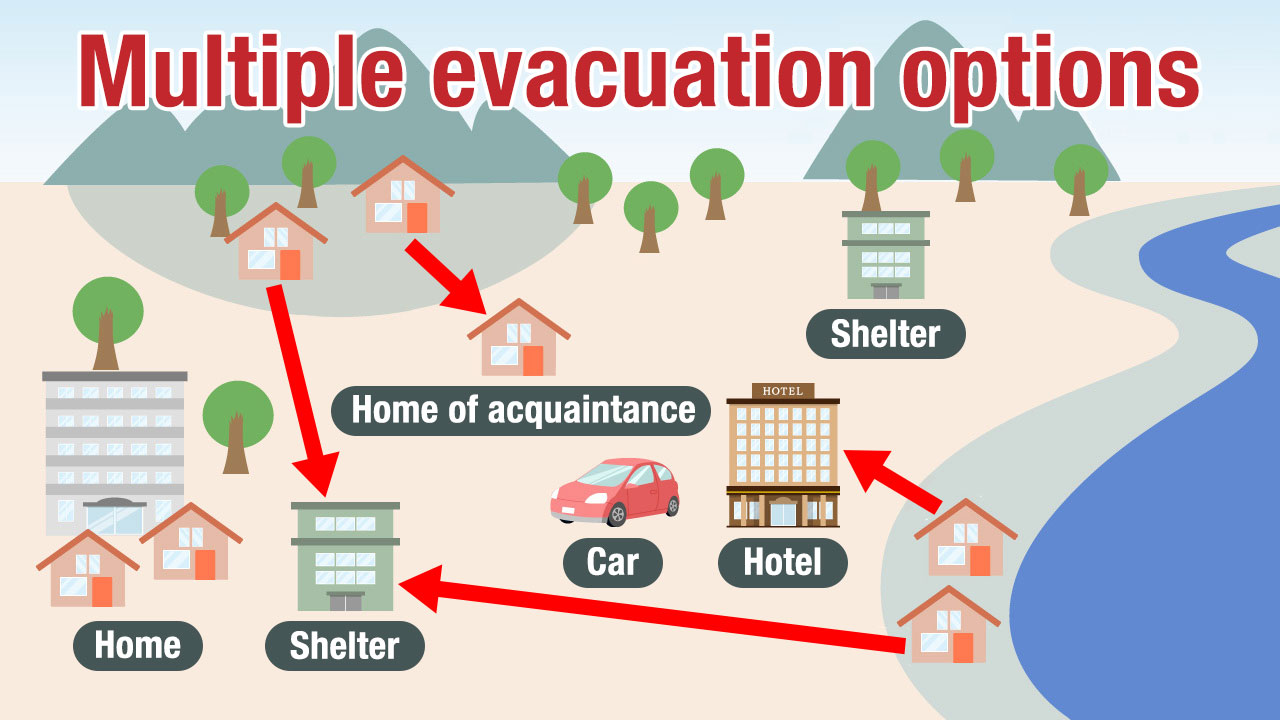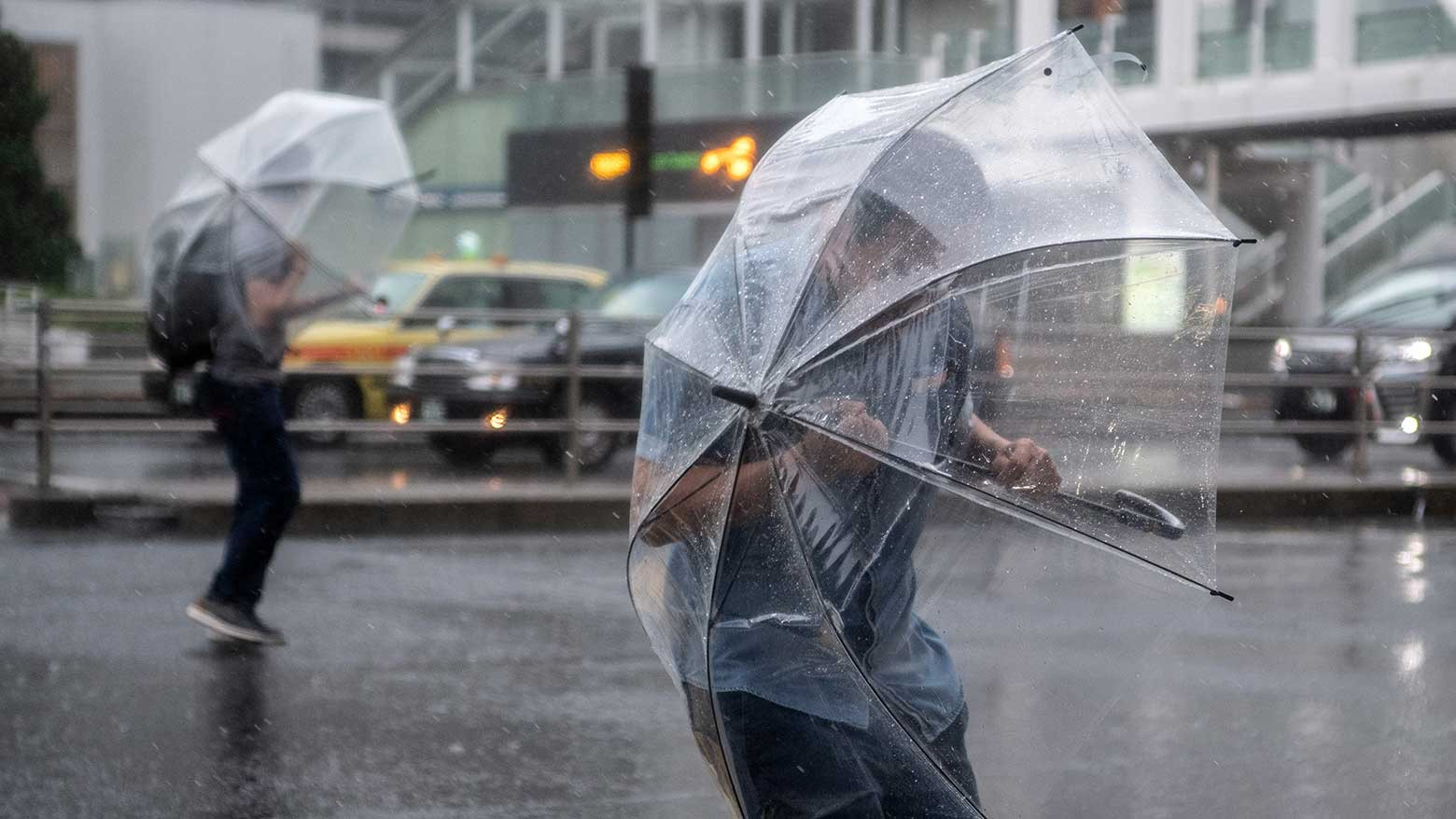Violent winds
Typhoons can bring winds in the vicinity of 80 m/s, or 288 kph. A wind velocity half that is strong enough to blow over signboards and overturn a moving truck. Gusts of 60 m/s, or 216 kph, are equivalent to the speed of Shinkansen bullet trains and capable of destroying buildings. During violent winds, items like umbrellas can break window panes, turning into dangerous weapons when airborne.
Before a typhoon approaches, people are advised to put away objects such as outdoor furniture, umbrellas and laundry poles as they can be blown away. Even small items like wet cloths or magazines can be dangerous if they are picked up by the wind. Use window shutters if they are installed. It is also effective to cover windows with cardboard or safety film to prevent shattering.
Typhoons can cause blackouts and interrupt water supply. It is recommended to have stocks of food and water to last at least three days, as well as a plentiful supply of batteries. Prepare well ahead, and do not wait until the storm winds begin to blow.
Wind gusts, including tornados, can blow far from the center of a typhoon. If there are any signs of cumulonimbus clouds approaching, such as lightning, a sudden change in wind, or a darkening sky, seek safety in buildings with strong foundations. Once indoors, close the curtains and move to a room that has no, or few, windows.
Storm surges
A storm surge occurs when a typhoon or a developing low-pressure system approaches and the ocean's surface is sucked higher. In addition, strong winds cause vast amounts of sea water to flood coastal areas. This phenomenon has repeatedly caused extensive damage across Japan.
In 2018, Typhoon Jebi caused a massive storm surge in Osaka Bay in western Japan. It flooded a vast area including Kansai International Airport and the recovery took 17 days.
In 2004, Typhoon Chaba caused storm surges in many areas of the Seto Inland Sea. Three people died in Kagawa and Okayama prefectures. Storm surges wreaked havoc during the Ise Bay typhoon in 1959, causing the deaths of more than 5,000 people in Aichi and Mie prefectures.
When storm surges occur in combination with high waves, the situation can become even more dangerous. In 2013, Typhoon Haiyan struck the Philippines with a central atmospheric pressure of 895 hectopascals. Waves are believed to have reached a height of over 20 meters off the coast. A storm surge of more than 5 meters was described by one witness as "like a tsunami.” More than 7,000 people died or were reported missing.
It is important to understand and prepare for the risks of storm surges well in advance of a typhoon. Local governments in Japan prepare hazard maps that identify flood risk areas and list possible flood depth estimates. The risk of damage from storm surges is highest in coastal areas, near river mouths, and on land below sea level. If an evacuation advisory or a storm surge warning is issued by local governments, swift evacuation is recommended.
Flooding of rivers
Heavy rains brought by typhoons often cause major rivers to flood. Last year’s Typhoon Hagibis led the Chikuma River in central Japan, as well as many other waterways, to burst their banks. Flooding occurred at a total of more than 140 locations, inflicting serious damage to an extensive area.

Residents are advised to check beforehand whether their homes are situated in a designated at-risk flood zone by studying a hazard map issued by local governments. Check the estimated depth: if more than three meters of water is predicted, this means the second floor of a building could be flooded. If it's more than five meters deep, water could reach the third floor.
In Japan, local weather observatories issue flood warnings for high-risk areas. For major rivers, the central and prefectural governments, in coordination with local weather observatories, jointly issue information about imminent danger. When such information is issued, it is vital to evacuate as early as possible.
It’s not just the major rivers that pose problems. Even a small waterway or irrigation canal can bring serious risk. During a prolonged downpour, banks can be breached suddenly, taking pedestrians and motorists by surprise.
When rain and wind are already fierce, or after nightfall, people are advised to protect themselves by moving to the second floor or above of a robust building, rather than seeking shelter outside.
Risks remain after the typhoon passes
While it is dangerous to go outside when a typhoon is approaching, it is also risky to walk or drive afterwards. Objects blown about in strong winds could be strewn across roads and sidewalks. Pedestrians can trip and injure themselves and if vehicles hit debris on the road, crashes and flat tires are possibilities.
The Japan Automobile Federation (JAF), which offers emergency road service to motorists, reports that flat tires account for the largest percentage of troubles caused by typhoons. Officials believe many cases are caused by vehicles running over parts of roofs, walls or branches that get blown away and scattered across roads. JAF received 782 emergency calls in Osaka Prefecture alone over three days in September 2018 as the result of Typhoon Jebi. The organization advises drivers to take extra care if they are on the road after a typhoon has passed, and to check road conditions.
Typhoon preparedness
Before strong winds and heavy rains hit, there are several measures to undertake around your home:
- Find a safe place for items that are kept outside, like potted plants and bicycles. Bring them inside if necessary to ensure they are not blown off verandas or balconies.
- Apply a safety film onto windows that do not have shutters to prevent them breaking or shattering. Alternatively, close the curtains and tape up the window.
- Clear out drains because if they are filled with leaves or other refuse, water could overflow and cause damage.
- Check on packed items to prepare for an emergency evacuation, including drinking water, food, a portable radio and flashlight. Face masks, soap, alcohol disinfectant and a thermometer are also useful to prevent coronavirus infection.

It's important for families to have a disaster plan that includes how to confirm each other's safety and where to meet. Elderly people living far away from their families need to know what their loved ones plan to do in an emergency.
When torrential rain hit parts of Japan earlier this year, some evacuation shelters had to turn people away as capacity was limited to prevent the spread of the coronavirus. To guard against that possibility, check the status of shelters in advance via local government websites.
It is useful to have a back-up plan. Consider evacuating to the homes of friends or relatives.

Typhoons also cause power outages. People worry that food inside the refrigerator will go bad. According to electronics maker Panasonic, some models will stay cool for about two to three hours if the doors are kept shut. The company also suggests stacking frozen items close together to keep them from thawing.
For your reference:
